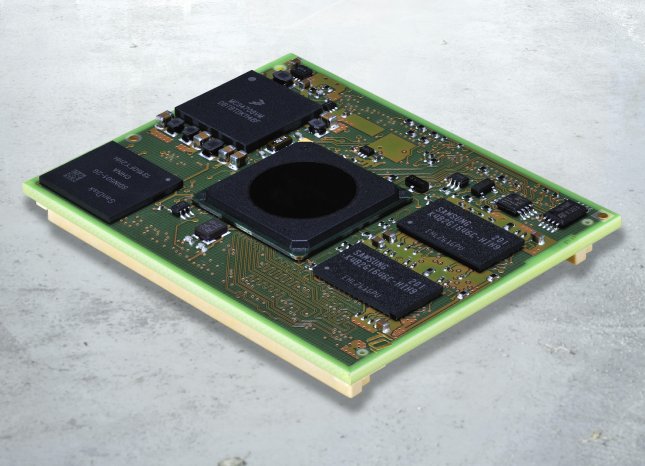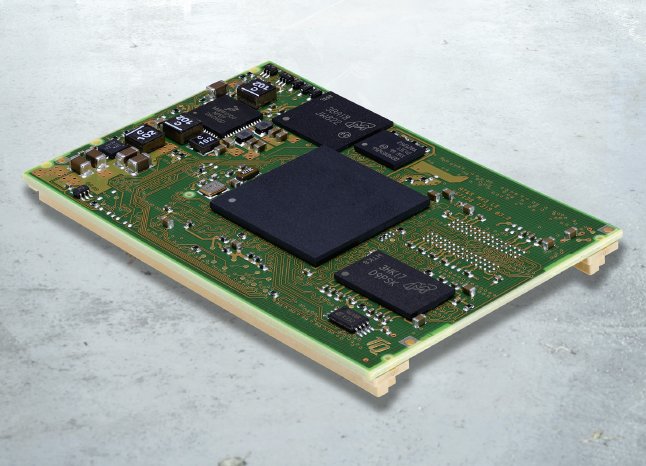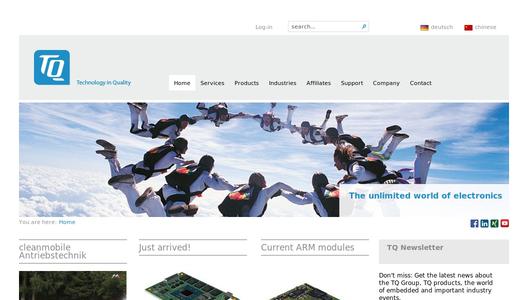The TQMa7x uses an optimized ARM Cortex-A7 core with up to 1GHz. This CPU is able to achieve a high level of processing power with very low power loss. TQ is bringing out two versions which in essence differ only to the extent that there will be a single- and a dual-core version. This embedded board is trimmed in particular to achieve very low power loss.
The second new ARM module TQMa5xxx is combined with an ARM Cortex-A15 core with up to 2 x 1.5 GHz. Special attention is being paid to the integrated graphics. The excellent CPU performance of this module, combined with high-performance graphics assisted by various fieldbus applications will also make this module attractive to industrial controllers.
With these two CPUs, the manufacturers have succeeded in providing a balanced combination of CPU performance, interfaces and performance characteristics for an attractive module design. With their wide variety of interfaces and their small size of only 54 mm x 40 mm (TQMa7x) and 60 mm x 54 mm (TQMa5xxx) as well as their low power consumption, the new ARM modules by TQ are going to provide an ideal core for applications ranging from human-machine interfaces, industrial controllers and Internet-of-Things (IoT) gateways. In addition, numerous other possible applications for embedded boards can be imagined which depend on the requirements of the intended application.
The integrated LCD controllers and camera interfaces in the processor make it possible to also implement system developments which place greater demands on display and touch, as well as applications with direct camera connection. This provides a huge cost advantage.
The TQMa7x and TQMa5xxx embedded modules are adapted for system developers so that an optimum number of interfaces can be used directly from the module, thereby making embedded modules eminently suitable for platform concepts at the inter-departmental level and allowing companies to reuse know-how they have already acquired. Not only does this save valuable time in many projects, it also reduces development costs.
In addition, two pin- and software-compatible versions of processors (single/dual core) can be used on each of the two ARM modules. These differ both in the number of cores as well as in the number of interfaces available.
All CPU signals to be used externally are provided via connectors on a 0.8 mm grid suitable for industrial applications which have stood the test of time at TQ for more than 15 years. In addition to 2x Gigabit Ethernet, 1x PCIe, USB host / USB-OTG controller and up to 7 UARTs, the user can make use of up to two CAN interfaces on approx. 280 pins for communication. Additional functional units can be connected via SDIO, SPI, I2C and I2S.
Embedded modules are designed to have up to 2GByte DDR3L RAM, 512 MByte Quad SPI NOR Flash and up to 32 MB eMMC Flash for program and data. In addition, an EEPROM and a real-time clock which is battery-buffered by the motherboard will be implemented.
Starter kits will allow users to access a wide range of qualified connection options. Each starter kit is provided with all signal pins on pin strips not directly used on the board.
A Linux BSP will be developed for the module- and mainboard-specific interfaces. Adaptations to other operating systems such as QNX, VxWorks, and WIN EC2013 are planned as well.
With these designs, TQ is expanding its product range by a CPU architecture based on ARM Cortex-A7 and on ARM Cortex-A15. All customers of TQ and all those interested will receive support for these products as well with our usual reliability and quality in design.



